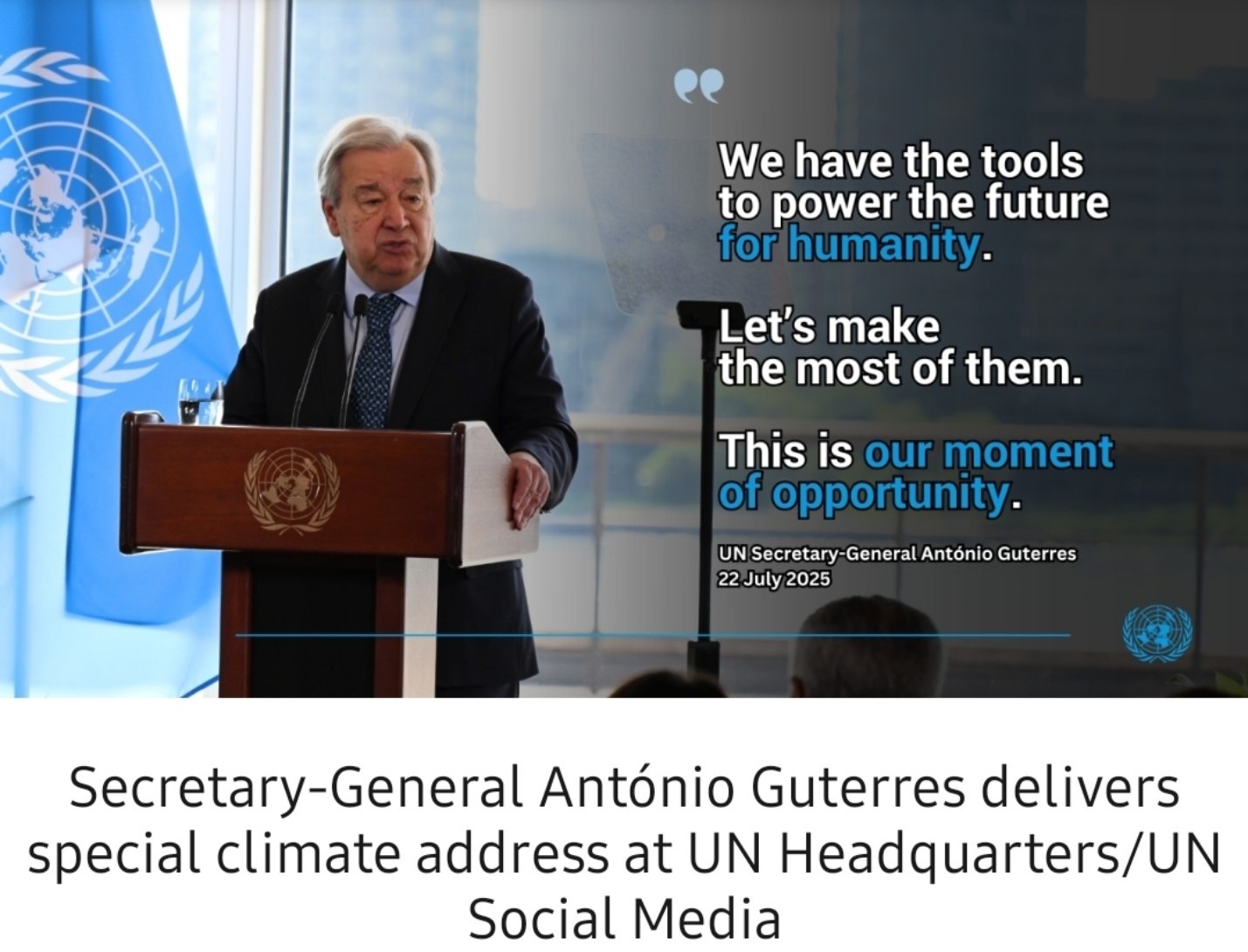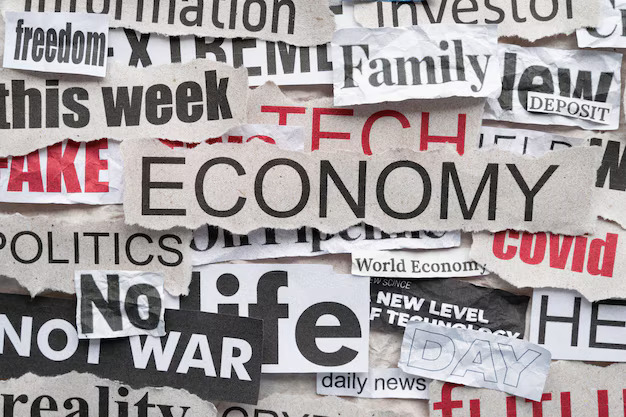
Our Climate Crossroads: A Moment of Opportunity, Not Complacency
Our Climate Crossroads: A Moment of Opportunity, Not Complacency
Earlier this week, the world heard a sobering yet empowering message from United Nations Secretary-General António Guterres. From the podium at the UN Headquarters in New York, beneath the iconic blue emblem of the United Nations, he delivered a powerful climate address that will echo across policy rooms, corporate boardrooms, and perhaps—most importantly—dining tables around the world.
“We have the tools to power the future for humanity. Let’s make the most of them. This is our moment of opportunity.”
These words are not just rhetoric—they are a call to action backed by urgency. As Guterres rightly reminded us on July 22, 2025, we stand not at the brink of despair, but at the threshold of potential.
India's Role in the Global Climate Movement
For a country like India, Guterres' message is especially poignant. India is both a victim of the climate crisis and a potential leader in the solution. With our vast human capital, rapidly expanding renewable energy sector, and growing youth-led climate consciousness, we have more than just the “tools”—we have the will.
India’s ambitious targets for renewable energy, especially its push toward solar and wind, align with Guterres’ vision of harnessing tools already within our grasp. However, policy must now catch up with promise. Carbon markets, public-private collaboration, and climate-resilient infrastructure must become mainstream.
Time to Act, Not Just Talk
This address wasn’t merely ceremonial. It was a blunt reminder that climate policy cannot be shelved until after the next election, or the next budget cycle, or the next international summit. The science is unambiguous: we are running out of time. The world has already seen record-breaking temperatures this year, devastating floods in Europe and South Asia, wildfires across continents, and a rising human toll from climate-related disasters.
Yet, Guterres didn’t speak of doom. He spoke of opportunity—a word that must now define the climate narrative.
Youth, Technology, and Accountability
One of the most encouraging shifts we see today is the surge of youth engagement. India’s climate-conscious generation is not waiting for permission to act—they are building green startups, leading local sustainability movements, and holding corporations and governments accountable. This groundswell must be matched with institutional support, funding, and freedom.
Technology also holds promise. From AI-driven climate modeling to breakthroughs in battery storage, the world has indeed developed tools capable of powering a clean, equitable future. But as Guterres emphasized, “Let’s make the most of them.” Innovation without implementation is a missed opportunity.
Beyond Borders, Beyond Politics
Climate action cannot be dictated by geography or ideology. The planet does not recognize the lines we draw on maps. Guterres’ speech was a global call—but its success depends on local responses. Whether it’s forest conservation in the Western Ghats, pollution control in Delhi, or coastal protection in Sundarbans, India’s regions have unique battles and must be equipped accordingly.
Moreover, this is a moment for moral leadership. For too long, climate change has been framed as an economic liability. In truth, it is the greatest ethical test of our time. Will we allow the poorest and least responsible to suffer the most? Or will we lead with justice?
Final Word: Seize the Moment
Guterres has handed the world a mirror and a map. We must see ourselves clearly in that mirror—aware of the damage done, yet capable of change. And we must use the map wisely, choosing the path not just of survival, but of sustainability and equity.
India has a voice that matters. Let us raise it not just in speeches, but in actions. This is our moment. Let’s not squander it.

.jpg)




💬 Comments
No comments yet. Be the first to comment!